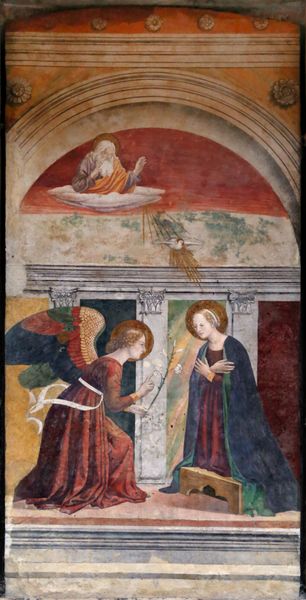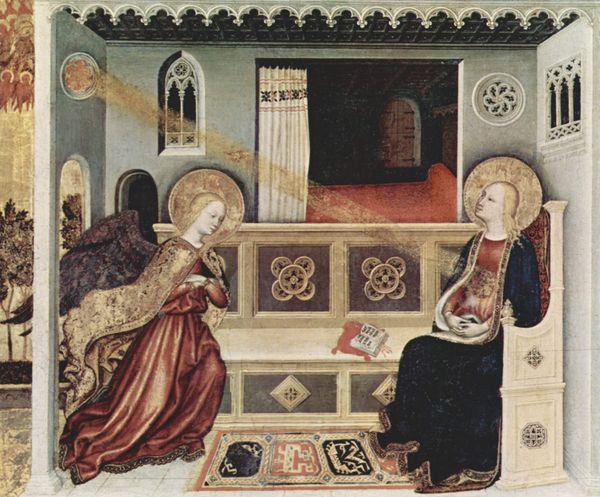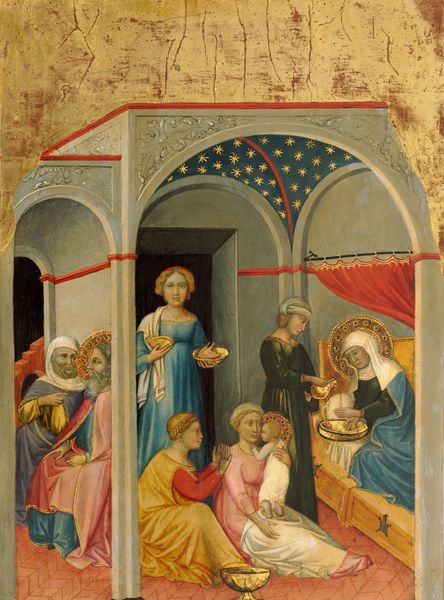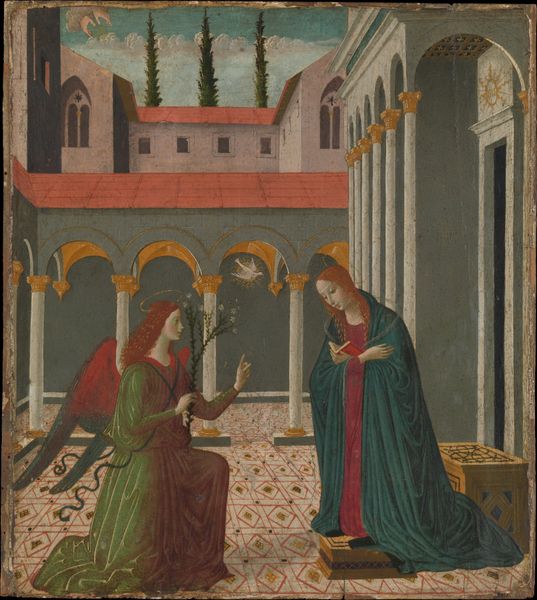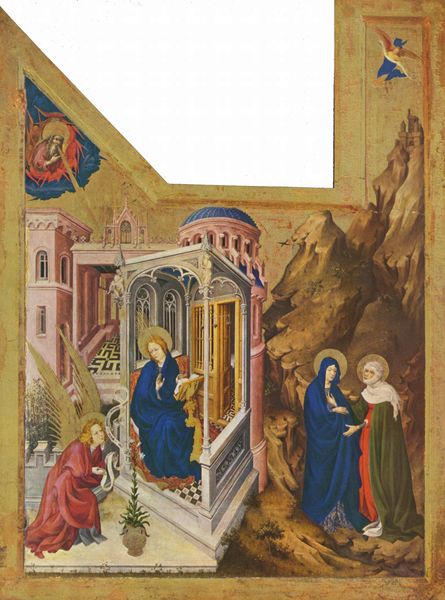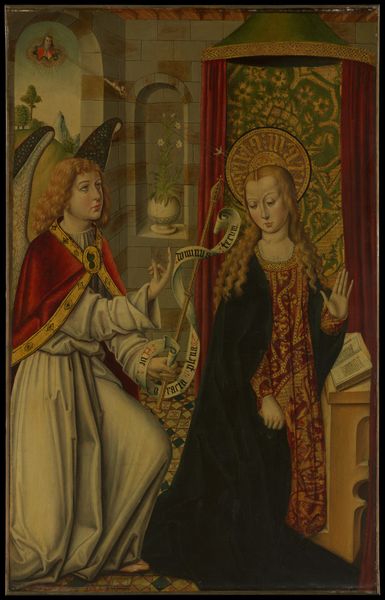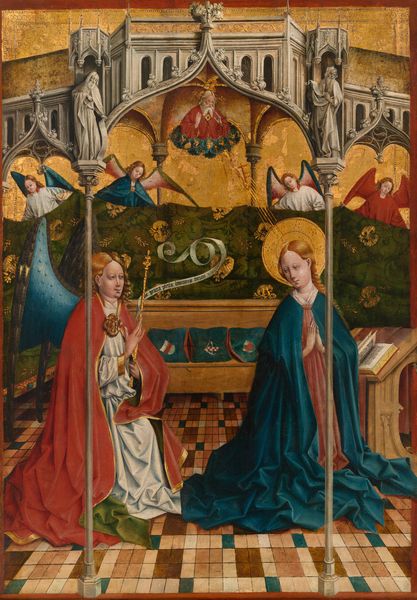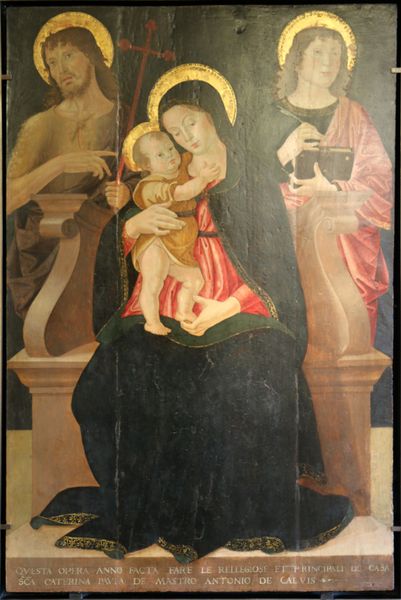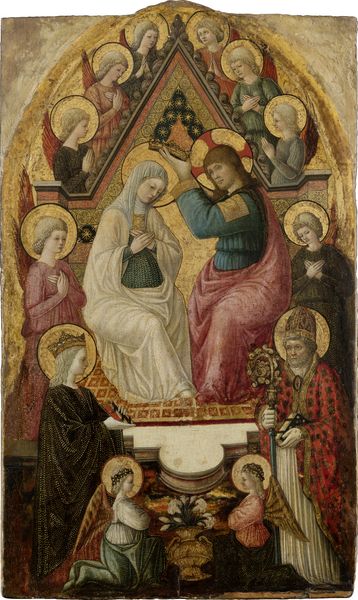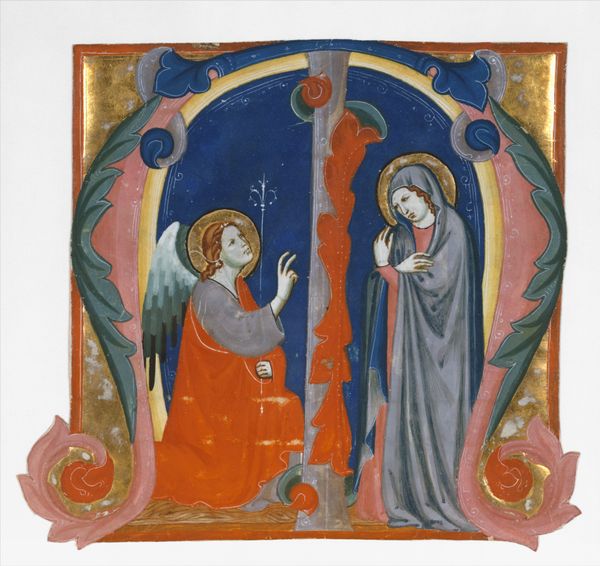
tempera, fresco
#
water colours
#
narrative-art
#
tempera
#
figuration
#
fresco
#
oil painting
#
underpainting
#
history-painting
#
italian-renaissance
#
early-renaissance
Copyright: Public domain
Editor: This is "Annunciation" by Antoniazzo Romano. It's so interesting to see a fresco in this kind of muted palette; it creates this almost dreamlike, ethereal quality, don't you think? What stands out to you in terms of the formal composition? Curator: Note the geometric compartmentalization; each element appears deliberately positioned and balanced. How does the color interplay influence your interpretation? Editor: The soft hues of the figures against the cool gray of the background really emphasize their forms, almost making them pop forward, but it also evokes a certain humility. Curator: Exactly. Observe how the artist employs line and form to convey volume and spatial depth. Do you find that Antoniazzo uses atmospheric perspective to enhance the spatial organization? Editor: I think so, it is really subtle, but that background recedes, doesn’t it? What do you make of the abrupt ending of the painted surface? Is that meant to reinforce the importance of what remains? Curator: It creates a framed incompleteness that adds to its formal interest; this is also emphasized by a break of pattern within the backdrop and hints toward intentional, deeper understanding. The fresco surface contributes an additional element. Can you decode any underlying meaning through it’s semiotic presentation? Editor: So, thinking about it, there is the visible crack along the top; it visually pulls God and the holy spirit forward as fractured... which brings the entire moment forward from an untouchable space, into something more temporal... relatable even. Thank you. Curator: Precisely. Form in Renaissance painting serves to signify an underlying system and pattern of being; our visual analysis gives deeper contextual comprehension.
Comments
No comments
Be the first to comment and join the conversation on the ultimate creative platform.
